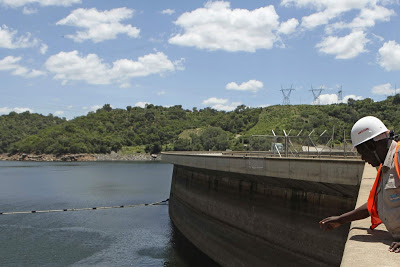Hydropower generation hit a record low in February due to the ongoing drought that has nearly exhausted Kenya’s major dams putting at risk electricity production from one of the cheapest sources.
Data from the Energy and Petroleum Regulatory Authority (Epra) shows hydropower generation dropped sharply by 64 percent to 112.7 million units in February down from 184.68 million units in January.
This marks the fifth consecutive monthly drop in the generation of electricity from hydropower dams, underlining the significant impact that the ongoing months-long drought is having on Kenya’s critical energy resources.
Hydro is Kenya’s second largest power source after geothermal. In the financial year to June 2022, Kenya Power bought 26.46 percent of its electricity from hydro sources.
Kenya has 16 main hydro dams supplying the country’s power, including Kiambere, Turkwell, Gitaru, Masinga, and Kamburu. Others are Sondu Miriu, Tana, Wanjii, Kindaruma, and Sangoro.
The closest a drought had such a major effect on Kenya’s electricity production was between August 2009 and February 2010 when hydropower generation fell to a then-record low of 115.34 million units in September 2009.
At the time, the country was plunged into daily power rationing that saw some households and businesses get power for just hours in a day.
Power prices also skyrocketed as Kenya Power was forced to resort to procuring higher quantities of power from thermal power producers such as the Coast-based Rabai Power plant, IberAfrica, and Mumias Sugar.
Customers have not had to face power rationing this time after Kenya in January started importing 200 megawatts (MW) of cheaper power from Ethiopia which has helped to stabilise the power supply.
Epra has, however, raised power prices due to the higher quantity of thermal power that is being fed into the grid to compensate for the drop in hydropower generation as well as a weaker shilling.
The energy regulator this week raised the fuel cost charge (FCC) to Sh8.3 per kilowatt-hour (kWh) up from Sh6.59 per unit last month. It is the highest rate of the fuel energy component since June 2012 when it hit a record Sh9.03/kWh.
Epra also raised the foreign exchange rate fluctuation adjustment (Ferfa) to Sh2.16 per unit from Sh1.85 per unit last month due to the weakening shilling against the US dollar.
This has raised the unit cost of power for lifeline consumers to Sh22 per unit up from Sh20 last month.
Energy Cabinet Secretary Davis Chirchir last month warned of the low water levels in the dams stating they could be shut down until the rains return.
“We have water level problems and we may be forced to push other forms of power generation to meet the country’s power demand but the only challenge we might get is that power will slightly be expensive,” he said.
The rainy season is expected to start later this month until May which will help refill the drying dams, but the weatherman has warned that this year’s rains may be muted compared to previous years.
Published by The Nation.Africa




